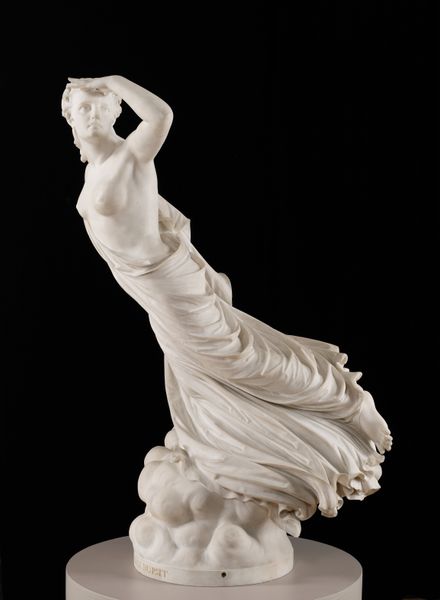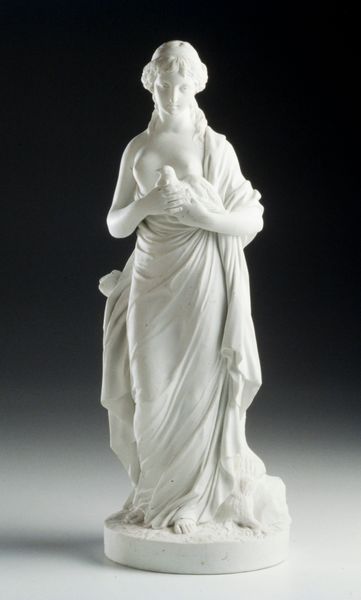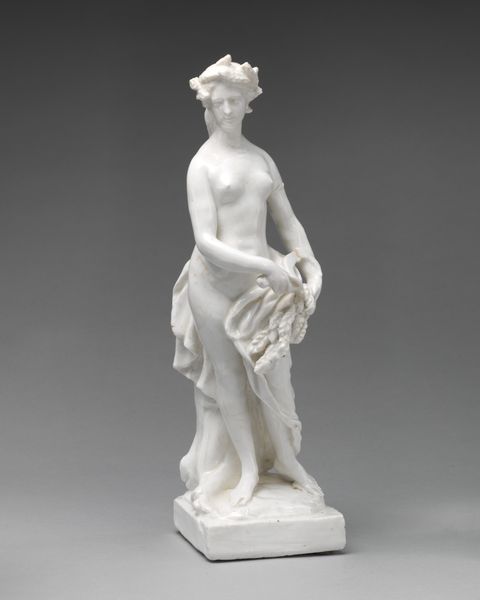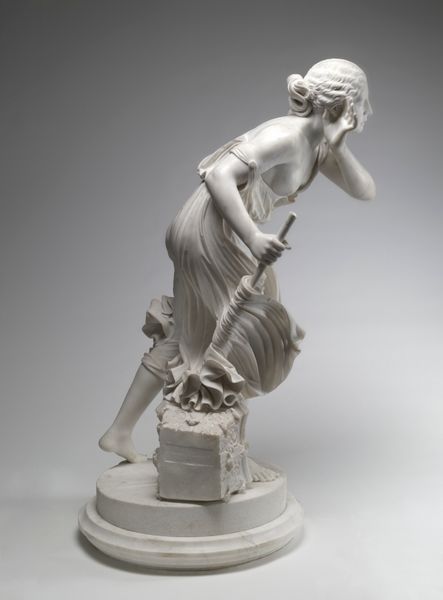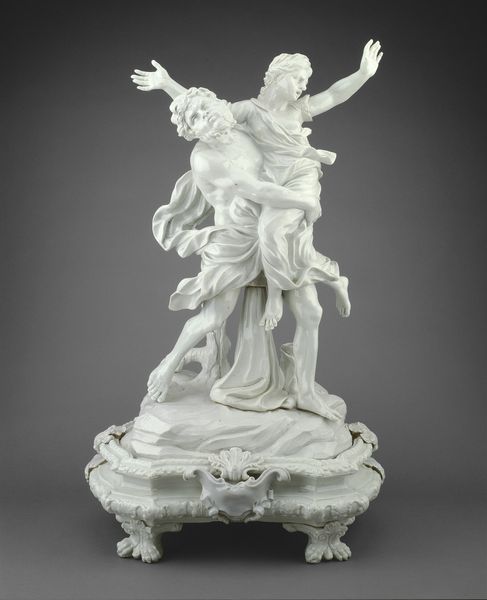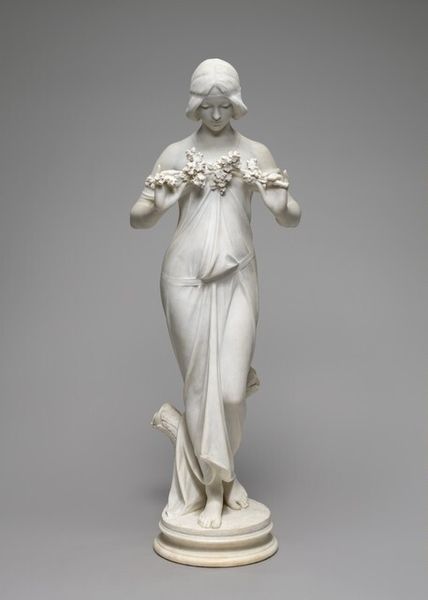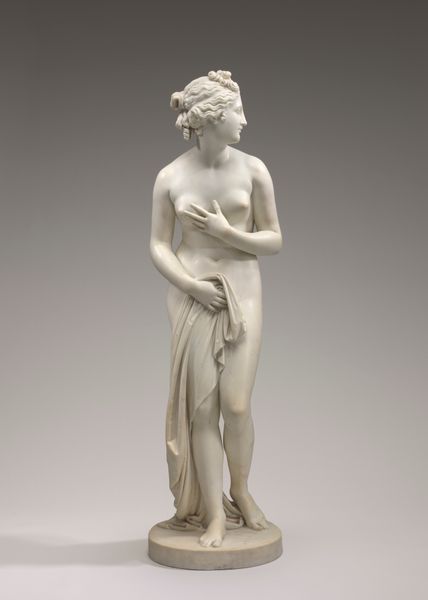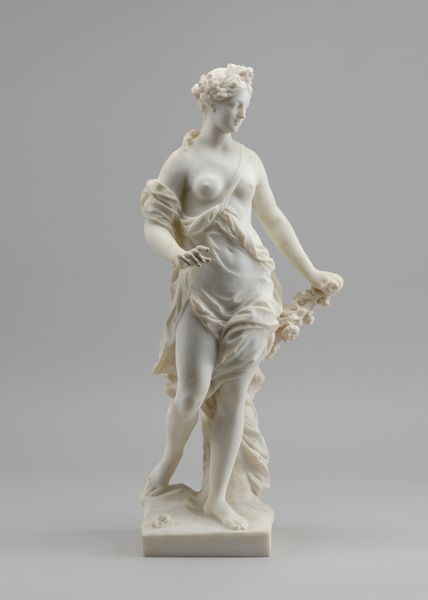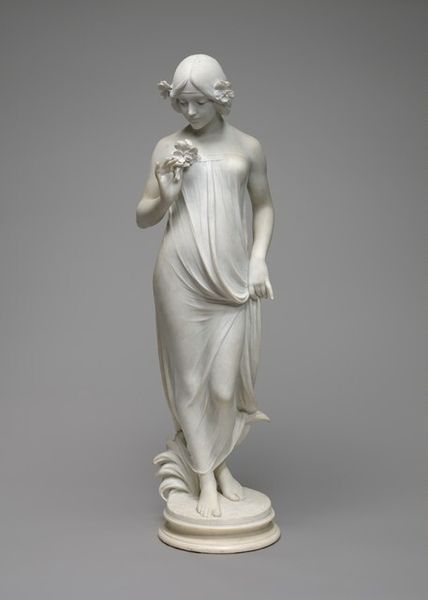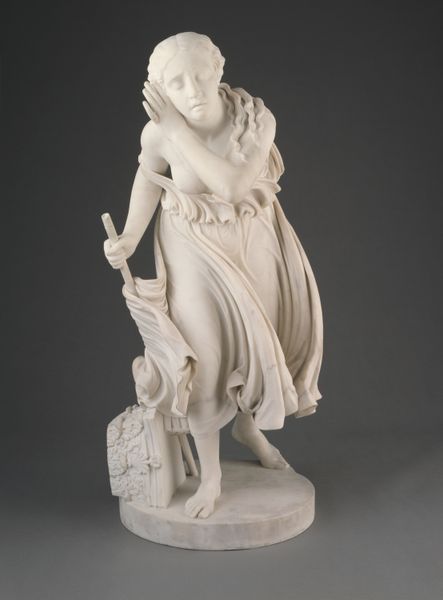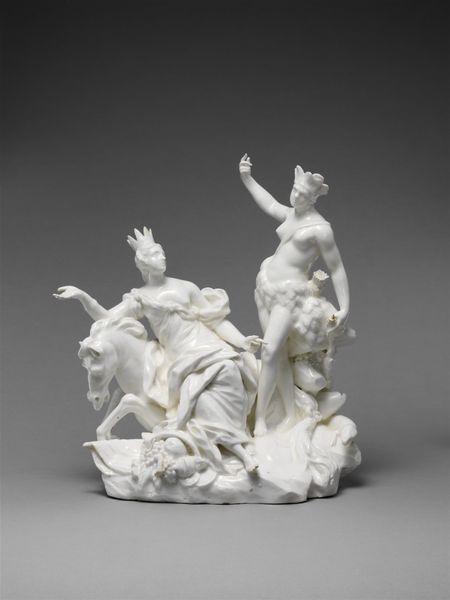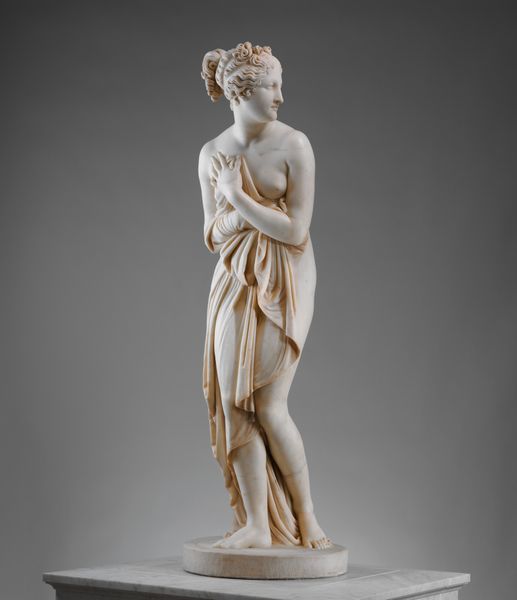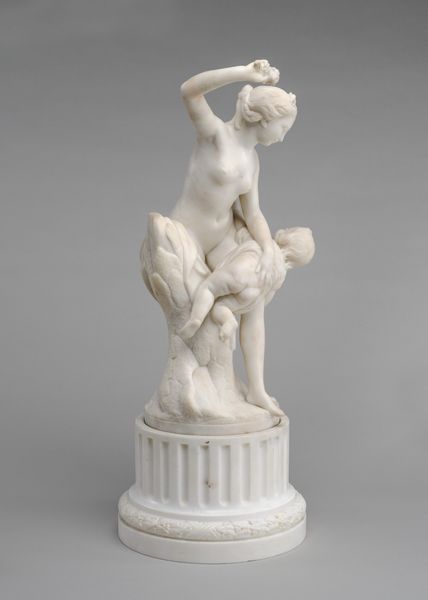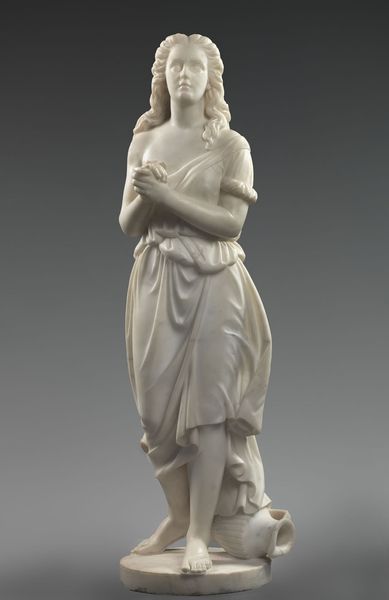
Dimensions: H.: 129.5 cm (51 in.)
Copyright: Public Domain
Editor: Here we have "The Lost Pleiade," a marble sculpture created by Randolph Rogers around 1874. She has this graceful, flowing form, but there's also something melancholic about her pose. What stands out to you about this piece? Curator: Ah, the Rogers’ Pleiade… she speaks to a deep yearning, doesn't she? It's interesting how Rogers chose to portray her. The light dances across the marble, giving her both substance and ethereality, as if she’s halfway between the heavens and earth. Do you sense that duality in her gaze, perhaps looking for something she’s lost or left behind? Editor: I think I do. There is something heartbreaking about her story. It makes you wonder about the price of ascension or the sorrow of being forgotten. How does her Neoclassical style affect how we perceive those emotions? Curator: Neoclassicism aimed for ideal beauty and rational thought. Here, it creates a delicious tension. Her physical form embodies classical perfection, but her narrative plunges into emotional territory: loss, regret, even existential loneliness. This intersection adds layers, like peering through a crystal-clear lake and seeing something turbulent beneath the surface. You almost expect her to whisper a long forgotten lament! Do you feel like it captures an essentially American ambivalence about our roots in Greek tradition? Editor: Definitely. The artist kind of recontextualizes those earlier mythologies to reflect our culture and history in the US. Curator: It really is an image of someone straddling worlds: mythic and mortal, past and future, art and life. Editor: It is a thought-provoking perspective to consider how loss shapes our identity. Curator: Precisely. That's what makes the "lost" Pleiade still so present.
Comments
No comments
Be the first to comment and join the conversation on the ultimate creative platform.
